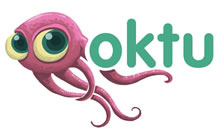Know what the gamification is, the different applications of this tool and the results obtained from it.
The gamification is a very effective tool in many areas, can be used in marketing, education and other ones. In this text we will know what the gamification is, its different applications and uses, the results generated by this application and the difficulties that can occur in the use of its application.
Since the introduction of the first’s game of Europe, Interton Video 2000 and Philips Tele-Spiel, video games have become an important part of daily life for most people, especially children and teenagers. These games have diversified and are being used in different areas. In this paper we will find out what is gamification, discuss about the uses of this tool like education and gamification, and talk about gamification strategies and other aspects of this tool.
What is gamification?
The gamification is defined as the practice of game dynamics in areas outside the game. It has a clear objective: create experiences that are comfortable. In a business the gamification would implement those game mechanics in a web page, a content portal or a marketing campaign in order to achieve user involvement. This means to bring gaming mechanics to other media, such as education, marketing, health and employment. The use of this tool has increased in recent years and is projected to continue increasing and diversifying in the following years.
What are its uses?
Among the positive effects of video games we have withholding knowledge of a particular topic, increase the skills of vision, attention and touch. With gamification several objectives can be achieved, for example, you can decrease the inhumanity of an electronic or online sale. Gamification promotes the interactions between the seller and the customer. Continuing the theme of marketing, another use that can be given to gamification is loyalty: can be used to attract and retain consumers in a branding. In short, the gamification has the power to convert an activity in a more exciting and fun one; it is also used for the engagement. Continuing with the uses of this technique in the setting of a brand, gamification helps to increase the consumers and their loyalty. Also this technique encourages people to perform activities considered tedious or boring, so it is being used in education or employment to minimize school failure in the first and increase productivity in the second.
A good gamification strategy
A good gamification strategy should consider these points:
- Set a goal.
- Identify the target audience.
- Create a proper gameplay.
In a dynamic game it is important to include challenges and rewards that are an elemental part of every game (status, achievement, competition, etc.). Only with an adequate strategy we are going to be able to achieve our aims, so it is important to set a strategy before starting to apply the gamification.
The gamification is a tool applicable to many different areas and, even is not a new tool, has been renovated and its use has been extended and tends to rise. For proper implementation of gamification, a strategy that addresses some important issues is needed, because without this strategy the application can fail.

